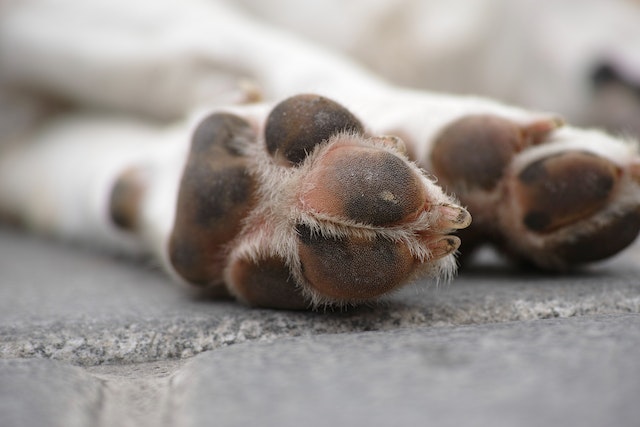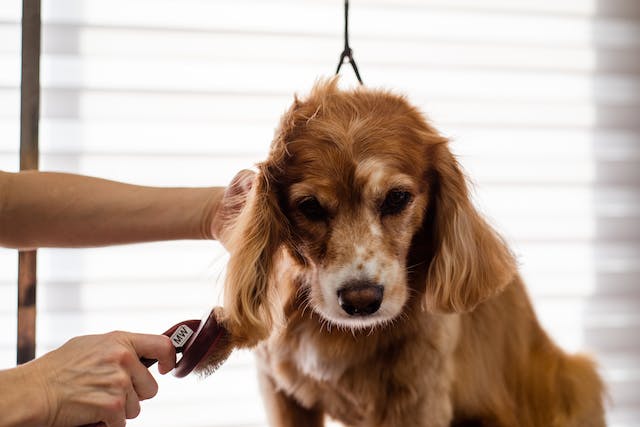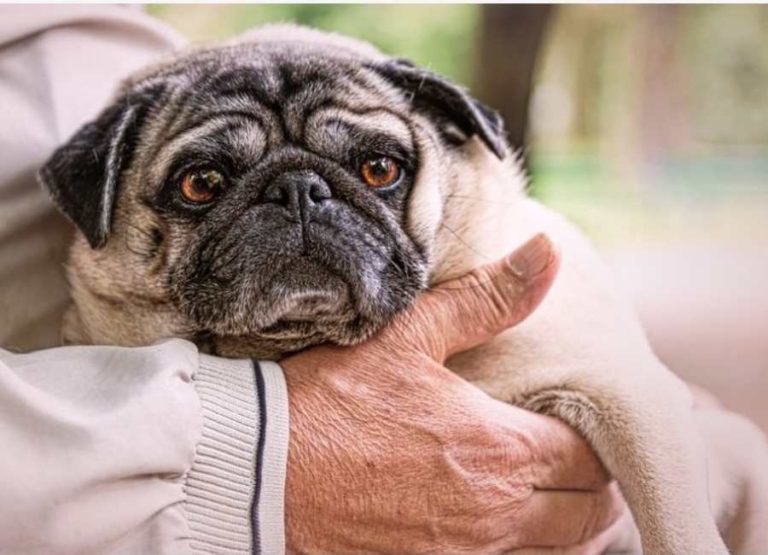10 Most Common Dog Paw Problems With Tips

Hey there, fellow dog lovers! Are you tired of seeing your furry friend struggle with paw problems? Well, fret no more!
In this blog post, we’ll delve into the common issues our beloved dogs face when it comes to their paws, and share some simple yet effective tips to keep those paws happy and healthy.
Let’s get started…
Signs of Dog Paw Problems
Dog paw problems can manifest in various ways and may indicate underlying issues that require attention and care.
Here are some common signs of dog paw problems:
- Limping or favoring a paw: If your dog is limping or avoiding putting weight on a specific paw, it could be a sign of pain or injury.
- Excessive licking or chewing: Dogs may excessively lick or chew their paws due to allergies, irritations, or infections. This behavior can lead to further complications if left untreated.
- Redness or swelling: Inflammation, redness, or swelling of the paw pads or between the toes can indicate an underlying issue such as an infection or injury.
- Cracked or dry paw pads: Dry, cracked, or rough paw pads may be a result of dry weather, exposure to harsh surfaces, or a lack of moisture. It can cause discomfort and lead to more serious problems.
- Bleeding or open sores: Any signs of bleeding, open sores, or wounds on the paw pads should be addressed promptly. They can be caused by cuts, punctures, or foreign objects.
- Discoloration or changes in pigmentation: Changes in the color of the paw pads, such as darkening or lightening, can indicate an underlying issue. It may be a sign of infection, inflammation, or a systemic condition.
- Odor or foul smell: A foul odor emanating from the paws can be a sign of infection, fungal growth, or bacteria. It’s important to identify and treat the underlying cause.
- Excessive paw chewing or pawing at the face: Dogs with itchy or irritated paws may resort to excessive paw chewing or pawing at their face in an attempt to alleviate discomfort.
- Difficulty walking or reluctance to exercise: If your dog shows reluctance to walk, run, or exercise, it could be due to paw pain or discomfort. Monitoring their activity level and seeking veterinary advice is crucial.
If you notice any of these signs in your dog, it is important to consult with a veterinarian for a proper diagnosis and treatment plan.
They can determine the underlying cause of the paw problem and provide appropriate care to ensure your dog’s comfort and well-being.
Dog Paw Problems
Dog paw problems can range from minor irritations to more serious conditions. Common issues include cuts, abrasions, infections, allergies, and ingrown nails.
Proper grooming, regular inspection, and prompt veterinary care can help prevent and address these problems.
Let’s dive deeper…
The following are some of the most common dog paw problems:
1. Paw Infections
Paw infections in dogs can be a common problem that can cause discomfort and pain.
The possible causes of paw infections include cuts or abrasions on the paw pads, foreign objects lodged in between the toes, allergies, or fungal and bacterial infections.
Symptoms of paw infections may include swelling, redness, limping, licking or chewing of the affected paw, and a foul odor.
Prevention of paw infections can be achieved by regularly inspecting and cleaning your dog’s paws, keeping their nails trimmed, avoiding walking on hot pavement or rough surfaces, and maintaining a healthy diet.
Treatment for paw infections may involve cleaning the affected area with an antiseptic solution, applying topical ointments or creams, and in severe cases, oral antibiotics may be prescribed by a veterinarian.
It is crucial to seek veterinary advice for proper diagnosis and treatment of paw infections to ensure the well-being of your furry friend.
2. Excessively Long or Ingrown Nails
Excessively long or ingrown nails can be a common problem for dogs and can cause discomfort and pain.
The possible causes of this issue include inadequate nail trimming, lack of exercise on hard surfaces, and certain medical conditions that affect nail growth.
Symptoms of excessively long or ingrown nails may include limping, difficulty walking, and visible signs of discomfort.
Prevention of this problem involves regular nail trimming, maintaining an active lifestyle on different surfaces, and monitoring the dog’s overall health.
Treatment options include regular nail trimming by a professional groomer or veterinarian, avoiding cutting the nails too short, and in severe cases, surgical intervention may be necessary.
3. Interdigital cysts (furuncles)
Interdigital cysts, also known as furuncles, are a common paw problem in dogs. These cysts typically occur between the toes and can cause discomfort and pain for our furry friends.
The exact causes of interdigital cysts are not fully understood, but they are believed to be associated with allergies, infections, foreign objects, or trauma to the paws.
Symptoms of interdigital cysts include swelling, redness, limping, licking, or chewing at the affected area, and the presence of small, fluid-filled bumps.
To prevent interdigital cysts, it is important to keep your dog’s paws clean and dry, regularly check for any foreign objects, and maintain proper grooming habits.
Treatment for interdigital cysts may involve a combination of home care and veterinary intervention. Home care may include soaking the paws in an Epsom salt solution, applying warm compresses, and keeping the area clean.
In some cases, the cysts may need to be drained or surgically removed by a veterinarian. Additionally, your vet may prescribe antibiotics or anti-inflammatory medications to alleviate any infection or inflammation.
4. Pododermatitis
Pododermatitis, also known as “hot spots,” is a common problem affecting the paws of dogs. It is characterized by inflammation and infection of the skin on the paw pads.
The possible causes of pododermatitis can vary but commonly include allergies, irritants, fungal or bacterial infections, trauma, or underlying medical conditions.
Symptoms may include redness, swelling, itching, pain, discharge, and hair loss in the affected area.
Prevention of pododermatitis involves regular paw hygiene and inspection, keeping the paws clean and dry, avoiding allergens or irritants, and ensuring proper nutrition and exercise for overall health.
Treatment options for pododermatitis depend on the underlying cause and severity. It may involve topical or oral medications to control infection and inflammation, antibacterial or antifungal treatments, as well as addressing any underlying conditions. In severe cases, veterinary intervention may be necessary.
5. Allergies
Allergies can indeed affect a dog’s paws, causing discomfort and irritation. There are several possible causes of allergies in dogs, including food allergies, environmental allergies (such as pollen or dust mites), and contact allergies (such as certain cleaning products or materials).
Symptoms of allergies in a dog’s paws may include redness, itching, swelling, and even sores or blisters. In some cases, the dog may excessively lick or chew at their paws, leading to further irritation.
Prevention of allergies in dog paws can be challenging, but some measures can help. Regularly cleaning and drying the paws after walks, avoiding allergenic substances, and maintaining a healthy diet can all contribute to minimizing the risk of allergies.
Treatment for allergies in dog paws typically involves identifying and eliminating the allergen, if possible.
This may require dietary changes, environmental modifications, or the use of medications such as antihistamines or corticosteroids. In severe cases, a veterinarian may recommend allergy testing and immunotherapy.
6. Broken nails
Broken nails can be a common problem in dogs and can cause discomfort and pain. They can occur due to various reasons, such as trauma, excessive scratching, or getting caught in objects.
Symptoms of a broken nail may include limping, bleeding, swelling, or reluctance to walk or put weight on the affected paw.
Preventing broken nails involves regular grooming and trimming of the nails to keep them at a proper length.
Additionally, providing appropriate surfaces for scratching and avoiding rough or sharp objects can help minimize the risk.
If a dog has a broken nail, treatment may involve cleaning the wound, applying a styptic powder to stop bleeding, and potentially trimming the broken nail further to prevent further damage.
It is important to note that if a broken nail is severe or causes excessive bleeding or pain, it is best to seek veterinary attention for proper assessment and treatment.
Prompt care can help prevent complications and ensure the dog’s comfort and well-being.
7. Hyperkeratosis
Hyperkeratosis is a common dog paw problem characterized by the excessive growth of keratin on the paw pads.
There are several possible causes for this condition, including genetic predisposition, autoimmune disorders, hormonal imbalances, nutritional deficiencies, and environmental factors.
Symptoms of hyperkeratosis in dog paws include thickening and hardening of the paw pads, dry and cracked skin, ulceration, discomfort, and difficulty walking.
To prevent hyperkeratosis, it is important to maintain proper paw pad hygiene by regularly cleaning and moisturizing them.
Additionally, providing a balanced diet with essential nutrients can help support healthy paw pad function.
Treatment for hyperkeratosis involves softening and removing the excess keratin using specialized balms or creams.
Regular paw pad exfoliation and moisturization can help manage the condition.
In some cases, veterinary intervention may be necessary to address underlying causes or prescribe medications such as corticosteroids or immune-modulating drugs.
Overall, early detection, diligent paw pad care, and proper veterinary guidance are key to managing hyperkeratosis and ensuring the comfort and mobility of our furry friends.
8. Abrasions, lacerations, and cuts
Abrasions, lacerations, and cuts are common problems that can affect a dog’s paws. They can be caused by various factors, including rough terrain, sharp objects, or excessive scratching.
Symptoms of these injuries may include limping, bleeding, swelling, and pain.
To prevent paw injuries, it is important to keep your dog’s paws clean and inspect them regularly.
Avoid walking your dog on rough surfaces and remove any sharp objects from their environment. Trimming your dog’s nails regularly can also help prevent injuries.
Treatment for these injuries typically involves cleaning the wound with a mild antiseptic and applying a pet-safe wound ointment.
In more severe cases, stitches or surgical intervention may be necessary. It is important to seek veterinary care if the injury does not improve or if signs of infection occur.
Overall, being proactive in paw care and providing a safe environment for your dog can help prevent and treat abrasions, lacerations, and cuts on their paws.
9. Dry, cracked foot pads
Dry, cracked foot pads in dogs can be a common paw problem that can cause discomfort and pain. Several factors can contribute to this condition.
Possible causes include exposure to harsh weather conditions, such as extreme heat or cold, walking on rough surfaces, lack of moisture, allergies, and underlying medical conditions.
Symptoms of dry, cracked foot pads may include visible cracks, redness, inflammation, and limping.
To prevent this issue, it is important to provide proper paw care, such as regular moisturizing with pet-safe balms and avoiding excessive exposure to extreme weather conditions.
Treatment options may include using moisturizing balms or creams specifically formulated for dog paw care, providing a suitable environment for healing, and addressing any underlying medical conditions.
10. Inflamed, swollen, and red paws
Inflamed, swollen, and red paws can be a common problem in dogs, known as pododermatitis.
It can have various causes, including allergies, infections, trauma, or autoimmune diseases. Symptoms may include redness, swelling, pain, itching, and even limping.
To prevent this issue, it’s important to keep your dog’s paws clean and dry, avoid irritants like chemicals or rough surfaces, and provide a balanced diet to support overall paw health.
Treatment for inflamed paws depends on the underlying cause. For allergies, identifying and avoiding the allergen is crucial. Infections may require antibiotics or antifungal medications.
Trauma-related inflammation can be managed with rest, bandaging, or protective boots. In more severe cases, your veterinarian may recommend topical ointments, oral medications, or specialized treatments.
Read more about caring for your dog paws.
Treatment Option for Dog Paw Problems
There are several treatment options available for dog paw problems. One common approach is to clean the affected area with a gentle antiseptic wash and apply a topical antibiotic ointment to prevent infection.
For minor injuries or irritations, a veterinarian may recommend using a protective boot or sock to prevent further damage and promote healing.
In more severe cases, such as deep cuts or puncture wounds, sutures or surgical intervention may be necessary.
It is important to consult with a veterinarian for a proper diagnosis and appropriate treatment plan for your dog’s specific paw problem.
Preventing Dog Paw Problems
The following are some common ways of preventing dog paw problems:
Regular Paw Inspections: Check your dog’s paws regularly for any signs of cuts, sores, blisters, or foreign objects like thorns or splinters. This will help you catch any issues early on and prevent them from worsening.
Keeping Nails Trimmed: Regularly trimming your dog’s nails can help prevent them from growing too long and causing discomfort or paw injuries. Overgrown nails can also affect your dog’s gait and lead to other paw problems.
Avoiding Hot Surfaces: Protect your dog’s paws from hot surfaces like pavement or sand, especially during hot weather. These surfaces can become extremely hot and cause burns or blisters on your dog’s paw pads.
Moisturizing Paw Pads: Keeping your dog’s paw pads moisturized can help prevent dryness and cracking, which can be painful for your dog. Use a pet-safe moisturizer or paw balm specifically designed for dogs.
Using Paw Protection: In extreme weather conditions, such as winter cold or hot pavement, consider using dog booties or paw wax to protect your dog’s paws from the elements. These can provide an extra layer of insulation and prevent injuries.
Cleaning Paw Pads: After walks or outdoor activities, clean your dog’s paw pads to remove any dirt, debris, or potential irritants. Use a damp cloth or pet-safe wipes to gently clean the paws.
Proper Paw Pad Hygiene: Ensure that your dog’s paw pads are kept clean and dry to prevent bacterial or fungal infections. Excessive moisture between the toes can create a breeding ground for bacteria, so make sure to dry your dog’s paws thoroughly after they get wet.
Avoiding Harmful Chemicals: Keep your dog away from chemicals, such as household cleaners, fertilizers, or pesticides, which can be toxic if ingested or come into contact with the paws. Wipe your dog’s paws after walks to remove any potential residue.
Regular Vet Check-ups: Regular veterinary check-ups are essential for maintaining your dog’s overall health, including their paw health. Your vet can guide preventive measures specific to your dog’s breed, size, and lifestyle.
Frequently Asked Questions
Why is my dog constantly licking its paws?
Excessive licking of the paws can be a sign of various paw problems in dogs. It could indicate allergies, skin infections, irritations, or even anxiety. It’s best to consult with a veterinarian to determine the underlying cause and provide appropriate treatment.
How can I prevent my dog’s paws from getting dry and cracked?
Dry and cracked paws can be uncomfortable for your furry friend. Regular paw care is important to prevent this issue. You can moisturize your dog’s paws using paw balms or natural oils like coconut oil. Additionally, avoid walking your dog on hot pavement or harsh chemicals that can further dry out their paws.
My dog limps occasionally. Could it be a paw problem?
Limping can be a sign of a paw problem, such as a sprain, strain, or even a foreign object stuck in their paw. It’s essential to carefully examine their paws for any signs of injury, swelling, or sensitivity. If the limping persists or worsens, consult with a veterinarian for a proper diagnosis and treatment.
What can I do if my dog has an ingrown nail?
Ingrown nails can be painful for dogs and may require veterinary attention. Avoid attempting to trim the nail yourself, as it could cause further injury. Instead, seek professional help from a veterinarian or a groomer who can safely and effectively treat the ingrown nail.
How can I protect my dog’s paws during hot weather?
Hot pavement can burn your dog’s paws, so it’s crucial to protect them during hot weather. Walk your dog during cooler times of the day or in grassy areas. You can also invest in dog booties or paw wax to provide an extra layer of protection against the heat.
What are some common signs of paw infections in dogs?
Paw infections can manifest in various ways. Look out for symptoms like redness, swelling, discharge, odor, excessive licking, or limping. If you notice any of these signs, it’s important to seek veterinary care promptly to prevent the infection from worsening.
Conclusion
In conclusion, taking care of your furry friend’s paws is essential for their overall well-being.
Remember to regularly check for any signs of irritation, keep their nails trimmed, and provide them with proper paw protection when needed.
By giving your dog the love and attention they deserve, you’ll ensure they can happily roam and play without any paw problems holding them back.




![What Do Beagles Usually Die From [9 Hints] What Do Beagles Usually Die From](https://petcreeks.com/wp-content/uploads/2023/05/What-Do-Beagles-Usually-Die-From-768x555.jpg)
![Why Does My Beagle Shake [8 Reasons & Tips] Why Does My Beagle Shake](https://petcreeks.com/wp-content/uploads/2021/04/dog-5206460_640.jpg)
